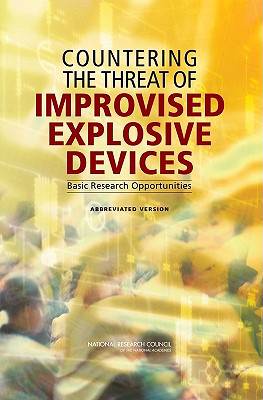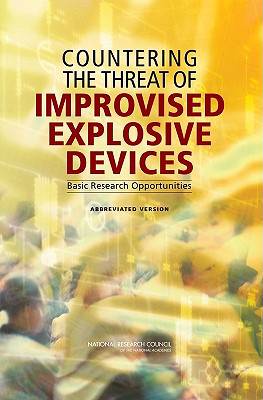
- Afhalen na 1 uur in een winkel met voorraad
- Gratis thuislevering in België vanaf € 30
- Ruim aanbod met 7 miljoen producten
- Afhalen na 1 uur in een winkel met voorraad
- Gratis thuislevering in België vanaf € 30
- Ruim aanbod met 7 miljoen producten
Zoeken
Countering the Threat of Improvised Explosive Devices
Basic Research Opportunities: Abbreviated Version
National Research Council, Division on Engineering and Physical Sciences, Naval Studies Board, Division on Earth and Life Studies, Board on Chemical Sciences and Technology, Committee on Defeating Improvised Explosive Devices Basic Resear
Paperback | Engels
€ 33,95
+ 67 punten
Omschrijving
Attacks in London, Madrid, Bali, Oklahoma City and other places indicate that improvised explosive devices (IEDs) are among the weapons of choice of terrorists throughout the world. Scientists and engineers have developed various technologies that have been used to counter individual IED attacks, but events in Iraq and elsewhere indicate that the effectiveness of IEDs as weapons of asymmetric warfare remains. The Office of Naval Research has asked The National Research Council to examine the current state of knowledge and practice in the prevention, detection, and mitigation of the effects of IEDs and make recommendations for avenues of research toward the goal of making these devices an ineffective tool of asymmetric warfare. The book includes recommendations such as identifying the most important and most vulnerable elements in the chain of events leading up to an IED attack, determining how resources can be controlled in order to prevent the construction of IEDs, new analytical methods and data modeling to predict the ever-changing behavior of insurgents/terrorists, a deeper understanding of social divisions in societies, enhanced capabilities for persistent surveillance, and improved IED detection capabilities.
Specificaties
Betrokkenen
- Auteur(s):
- Uitgeverij:
Inhoud
- Aantal bladzijden:
- 36
- Taal:
- Engels
Eigenschappen
- Productcode (EAN):
- 9780309109154
- Verschijningsdatum:
- 28/07/2007
- Uitvoering:
- Paperback
- Formaat:
- Trade paperback (VS)
- Afmetingen:
- 152 mm x 229 mm
- Gewicht:
- 72 g

Alleen bij Standaard Boekhandel
+ 67 punten op je klantenkaart van Standaard Boekhandel
Beoordelingen
We publiceren alleen reviews die voldoen aan de voorwaarden voor reviews. Bekijk onze voorwaarden voor reviews.











